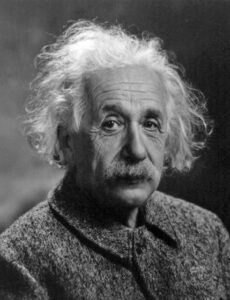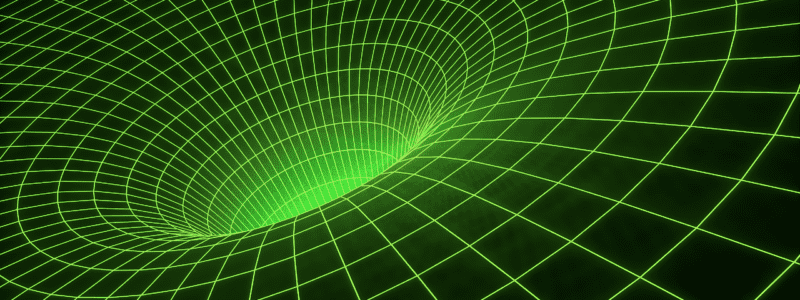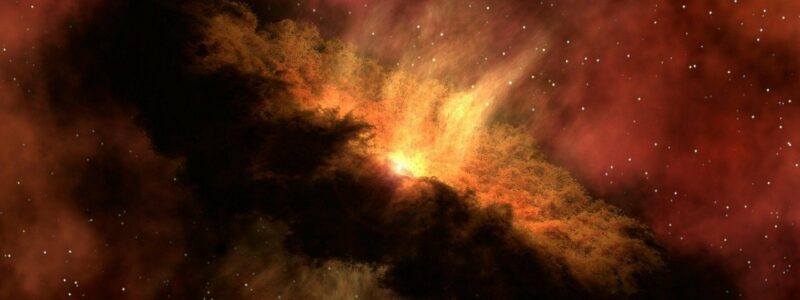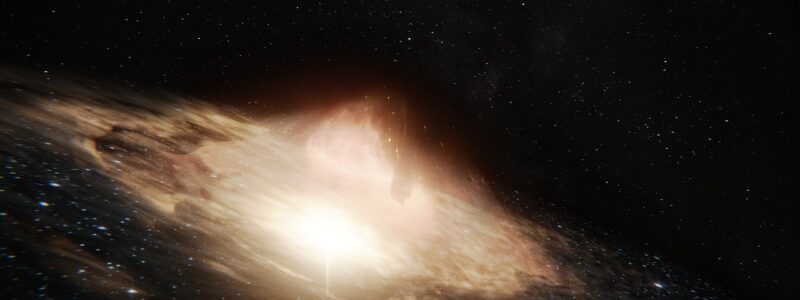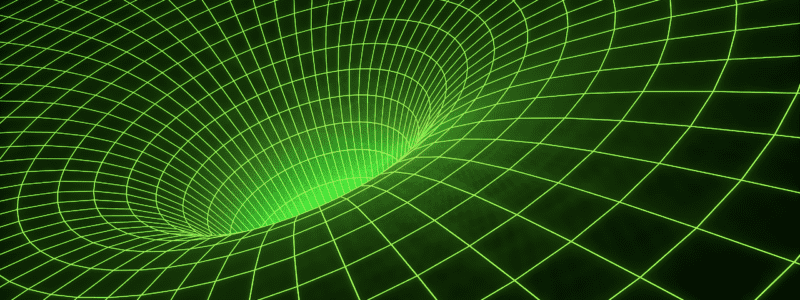The Beginning of Time

The Big Bang occurred about 13.82 billion years ago.
One of the most amazing things about the Big Bang theory is that it predicts the beginning of time and matter. For many years, theoretical physicists have attempted to revise the obvious predictions of Einstein’s theory of relativity concerning the expansion of the universe and the beginning of space and time. This beginning leads to the possibility of a Beginner with all the theological implications of that conclusion.
Recent scientific advances seem to make the case even more certain for the beginning of space and time. Many have proposed a multiverse situation where continuous creations of an infinite number of universes ever-expanding into space producing an infinite number of possible outcomes; we happen to live in a universe that has the extremely unlikely but not impossible assembly of physical laws and constants that make life possible.
But is that a valid proposition or is it just a hopeful theory?
In a series of scientific publications published from 1966 to 1970, three astrophysicists, Stephen Hawking, George Ellis, and Roger Penrose extended the solutions of general relativity to include space and time producing what is called the space-time theorem of general relativity.
These theorems have four assumptions,
- Time always progresses forward – never backward;
- Gravity is always attractive;
- The universe contains enough mass to produce at least one black hole (note that we now have direct observational evidence of a black hole in another galaxy);
- General relativity reliably describes the mechanics of the universe (the movements of massive bodies)
The space-time theorems guarantee a past singularity – a past beginning of time and space. As Hawking noted, “time itself must have a beginning.”
A beginning of space and time implies a causal agent beyond space and time who brought space, time, energy, and matter into existence. If space and time had a beginning then where did it come from?
There are only two sources of space and time – either it came from nothing or something. Since by definition, all space and time could not come from “something” then it must have come from nothing in space and time. As Hawking wrote,
Many people do not like the idea that time has a beginning, probably because it smacks of divine intervention.
The idea that there might be something like “God” lurking in the shadows of advanced physics is anathema to many scientists. Science does not like the possibility that there is an entity outside of science with creative abilities. The next few decades would be spent in a desperate search for a way to find – a time before time.
Looking for a time before time …
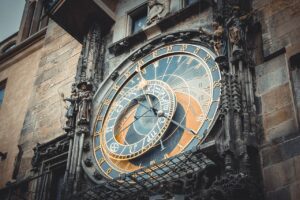
It’s about time!
The most obvious loophole would be to assume no beginning to time; that is, time must have an infinite past. Einstein’s theories of relativity have been proven over time to accurately reflect the universe to incredible tolerances. It has been the hope of generations of physicists that a loophole might be found.
Among the most successful investigations was made by Arvind Borde and Alexander Vilenkin. These theoretical physicists spent a decade determining whether there was a theoretical escape from a cosmic beginning. However, all escape models they were able to develop would either not permit the existence of life in the universe or were subsequently shown to be incorrect.
They demonstrated that regardless of the universe’s homogeneity, uniformity, isotropy, or lack of these characteristics, and regardless of the universe’s energy conditions or what kind of inflationary event the universe developed, the universe must have had a beginning. They determined any universe that on average expands (like ours) through its history (a requirement for physical life to exist) must be traced back in time to an actual beginning that includes the creation of space and time.
The need for a beginning according to what has been known as the BGV theory also applies to an oscillating universe as long as, on average, more expansion occurs than contraction. As Valentin noted,
With the proof now in place, cosmologists can no longer hide behind the possibility of a past eternal universe. There is no escape, they have to face the problem of a cosmic beginning.
Escape Hatch?: Quantum Gravity
Some theoretical physicists who want to escape the theological implications of the BGV theorem have attempted to find a loophole through quantum gravity. Some have proposed that quantum gravity allows them to conclude that despite all physical evidence to the contrary, the universe is really eternal. The best known of these theorems is the quantum eternity theorem developed by Sean Carroll.
Carroll and other models in the scientific literature mostly conclude that a way around a cosmic may be permitted through quantum gravity models.
There are also quantum gravity models that permit an absolute beginning as long as the quantum gravity era in the very beginning of the universe was “semi-classical.” In such an environment, the quantum gravity fluctuations are not large. Observational data of images of distant quasars and other objects support the idea that quantum gravity initial fluctuations cannot have been large.
The BGV theorem and the confirmation of small space-time fluctuations in the original quantum gravity era strongly support relativity and its theistic implications of an absolute beginning of time and space. The great significance arises from their implications placing science squarely in agreement with Genesis and confirms the traits of the Creator. The eternality of the universe is in direct contradiction of eastern religions where the universe is either eternal or is created at a point in time.
Furthermore, this confirmation of an absolute beginning includes any multiverse which might be conjured up. The theistic implications of an absolute beginning strongly suggest a Creator.
Much of these conclusions rely on the applicability and reliability of general relativity. Maybe there is some loophole to be found there.
Reliability of General Relativity
Einstein recognized the theological implications of his theorems and proposed three tests at the time of its publication. Within two years in 1918, a team led by British astronomer Arthur Eddington established the validity of Einstein’s theory with the first test when they proved the Sun’s gravity bends starlight by the amount predicted by general relativity. However, many scientists were not satisfied due to the margin of error in his observations.
By 1970, five more tests increased the accuracy of confirmation from 10% to 1% but still not enough to convince skeptics. Some scientists – again trying to avoid theistic implications of a universe beginning at a point in time – proposed other forces in nature that might also be operating.
However, by 1976, echo delay experiments placed on the moon by Apollo astronauts reduced the uncertainty down to 0.5%. The astronauts of various Apollo missions planted light reflectors on the moon to help determine the exact distance between the earth and the Moon. The distance to the moon is calculated “approximately” by the equation: distance = (speed of light X duration of delay due to reflection)/2. Since the speed of light is a defined constant, the distance can be precisely determined.
However, to determine the distance precisely, many more parameters must be taken into consideration. These include the location of the Moon in the sky, the relative motion of the Earth and the Moon, Earth’s rotation, linear liberation, polar motion, weather, speed of light in various parts of air, propagation delay through Earth’s atmosphere, the location of the observing station and its motion due to crustal motion and tides, and finally to relativistic effects.
However, all these complications have been worked out satisfactorily and now the distance to the Moon can be measured within millimeters. This is one of the most precise distance experiments ever made. It would be the equivalent of measuring the distance between New York and Los Angeles to within the width of a human hair.
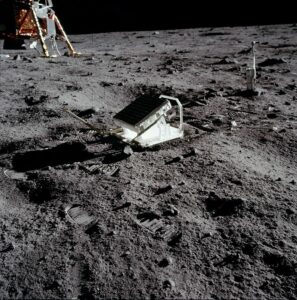
A lunar laser reflector was placed on the Moon by Apollo 11 in July 1969. By NASA – NASA Apollo Archive http://www.hq.nasa.gov/office/pao/History/alsj/a11/AS11-40-5952.jpg, Public Domain, Link
Then in 1979, measurements of gravitational effects on radio signals reduced the uncertainty to just 0.1%. In 1980, a hydrogen maser clock (which is nearly 100 times more accurate than the best atomic clock) onboard a NASA rocked confirmed general relativity down to the fifth decimal place (0.00001).
Relativity Measurements of the Motion of Massive Objects
Astrophysicists then suggested that while relativity might be confirmed in the weak gravitational influence of the Sun, Moon, and Earth, perhaps it would break down with the gravitational influence of neutron stars and black holes. These objects represent some of the most massive objects within the Universe.
The first test of relativity with a neutron star was conducted on a binary pulsar pair. A pulsar is a rapidly rotating neutron star with a powerful magnetic axis and emits powerful pulses of magnetic energy toward the earth every time it rotates. The gravitational interaction between these two neutron stars is extremely intense due to the combined effect of their intense gravitational fields of incredibly dense matter.
An international team of observers spent ten years of high-quality observations on this neutron star pair and others. The results matched the values predicted by general relativity to an accuracy of better than 0.5%. Relativity predicts that two neutron stars orbiting one another will radiate so much gravitational energy that they will spiral inward toward each other causing their orbital velocities to increase – this increase in velocity can be measured in terms of decades rather than millennia for other stellar pairs.
When these measurements were extended through twenty years, general relativity was confirmed overall to an error of no more than one part per a hundred trillion. Roger Penrose noted,
This makes Einstein’s general relativity, in this particular sense, the most accurately tested theory known to science!
This was such a breakthrough in physics with such obvious importance that the investigators were awarded the 1993 Nobel Prize in Physics.
In 2003, astronomers discovered a double pulsar binary in which the two stars orbit each other once every 2.454 hours. Over a five-year period, the observers showed a spin precession of 25 degrees which is in accord with predictions from general relativity.
The Lense-Thirring Effect
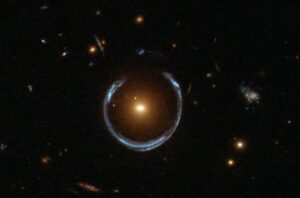
Einstein Rings – By Lensshoe_hubble.jpg: ESA/Hubble & NASAderivative work: Bulwersator (talk) – Lensshoe_hubble.jpg, Public Domain, Link
Joseph Lense and Hans Thirring pointed out in 1918 that general relativity predicts that gas orbiting a very dense body such as a neutron star or black hole at an angle to the plane of the spinning body’s axis will be affected in such a way as to wobble in its orbit. This wobble is caused by the twisting of space-time by the massive object; the wobble is called the Lense-Thirring effect.
This effect has been noted multiple times during the last decade.
- A team of four Polish astronomers studied the radio galaxy 3C 293 demonstrating a Lense-Thirring procession by its supermassive black hole in the center of the galaxy
- Another team of scientists evaluated the iron emission line in the X-ray spectrum of a star-black hole binary system H1743-3222. They show that the oscillations in the iron line centroid energy are produced by the Lense-Thirring effect.
- A Chinese team showed oscillations in the X-ray spectra of a black hole binary system that are thought to be consistent with the Lense-Thirring effect
- Dutch astronomers found oscillations in the X-ray flux from another black hole binary system caused by the black hole experiencing Lense-Thirring precession at different frequencies.
- Five European and ten Canadian astronomers’ observations of another black hole primary again showed oscillations due to the Lense-Thirring effect.
Increased sensitivity of measurement instrumentation has even allowed for the Lense-Thirring effect to be noted in solar system bodies – immensely less massive than pulsars and black hole objects noted above. These measurements further support relativity and all its implications for a universe with a beginning in time.
- Earth-orbiting satellites have the necessary sensitivities to measure these tiny effects. Observations over 3.5 years from the LARES satellites were able to demonstrate the Earth’s dragging of space-time frames matched the values predicted by the Lense-Thirring effect to within 0.6%.
- The Gravity Probe B mission was an Earth-orbiting satellite equipped with precision gyroscopes; these measured the geodesic drift rate of =6,601.8 ± 18.3 milliarcseconds per year and a frame-dragging of -37.2 ± 7.2 milliarcseconds per year in close agreement with predicted values.
Einstein Rings
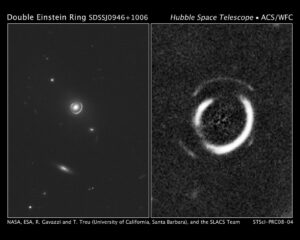
Double Einstein rings – By Daag – http://commons.wikimedia.org/wiki/Image:SDSSJ0946%2B1006.jpg%7CDoppelte, Public Domain, Link
Most people know that the gravity from massive objects will bend light passing near them. This was originally demonstrated in a 1918 solar eclipse noted above as one of the first affirmations of Einstein’s theory. But what is even more dramatic is the Einstein ring.
The ring occurs when a massive galaxy lies exactly on the line of sight between the observer’s telescope and a more distant luminous object. In this case, the gravity from the nearer massive object will bend the light from the distant object to produce a rin.
There are now many unambiguous Einstein rings observed at both optical and infrared wavelengths. Physicist Andrew Watson termed one of these rings a “dazzling demonstration of Einstein’s theory at work.”
These rings have now become almost commonplace with several hundred identified. There are even several double Einstein rings in which case the nearer galaxy acts as a gravitational lens for two distant galaxies.
More recently, another dramatic affirmation of Einstein’s theory and its consequent theological implications was the discovery of gravity waves.
Gravity Waves
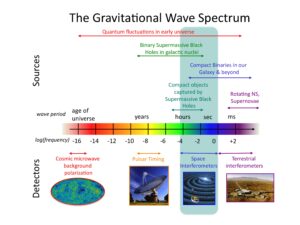
Gravitational Wave Spectrum
The discovery of gravity waves was one of the biggest breakthroughs in physics for many years. This required the intervention of the world’s most sensitive detector with the LIGO or the Laser Interferometer Gravitational Observatory. This remarkable instrument can detect a ripple in space-time as small as 0.001 the diameter of an atomic nucleus.
The first one ever discovered. This instrument was able to detect a phenomenon that has been predicted by physicists for many years. Gravity is the weakest (by far) of the four fundamental forces of physics and physicists knew that their only hope of discovering one of these would be an enormous gravitational disturbance caused by something very unusual. Such an unusual occurrence was observed on September 14, 2015, at 4;51 AM ET when two black holes with masses equal to 36 and 29 times the Sun’s mass emerged to form a single black hole equal to 62 times the Sun’s mass. Notice this does not add up because the equivalent of three times the Sun’s mass was converted into gravitational waves within 0.2 seconds.
Another gravity wave was discovered. Shortly afterward, LIGO discovered the merger of two other black holes on Christmas Day, 2015, at 10:39 PM ET. This one involved the merger of two black holes equal to 14 and 7.5 times the Sun’s mass to produce a single black hole with a mass close to 21 times the Sun’s mass. This was a particularly fortunate discovery because it occurred at one-third the distance of the first merger and LIGO was able to observe the gravitational waves that were generated from the last 55 orbits of the two black holes around each other before they finally merged. A simulation of this event can be found here.
Next came the neutron stars merger. Then on August 17, 2017, the LIGO team made the first observation of the merger of gravitational waves from the merger of two neutron stars. The merger of two black holes produces intense gravitational waves but no light as the black hole does not allow light to escape. However, with neutron stars, the gravitational forces involved are not quite so intense, and so it was possible to directly observe the merger.
This discovery caused quite a sensation and the call was made around the world for major telescopes to stop what they were doing and observe this rare phenomenon. Direct follow-up observations on August 17, 2017, showed visible radiation across the electromagnetic spectrum from gamma waves to radio waves, including the visible spectrum.
But what was even more important and even astounding is that this discovery shows that most if not all of the r-process elements that exist on Earth and everywhere else in the Universe are produced by neutron star mergers. This includes about half of the elements heavier than iron including such civilization-essential elements as silver, gold, platinum, palladium, osmium, thorium, and uranium.
This is another example of the fine-tuning required for advanced civilization on earth to exist. As Hugh Ross notes,
The detection of gravitational wave events provided yet more evidence to a big bang creation event consistent with what the Bible has taught for thousands of years. It also revealed additional evidence for the fine-tuning design of the Creator for the benefit of human beings. It showed that Earth must be protected from the deadly radiation from the nearby binary black hole and binary neutron star events during the era of humans and advanced animals yet be blessed with an abundance of such elements at Earth’s formation so as to adequately enrich Earth with the r-process elements necessary for life and civilization in particular.
Summary and The Beginning of Time
No theory of physics has ever been so rigorously tested and proven as general relativity. The fact that relativity has withstood all these challenges implies there should be no basis for doubting any of the theological and philosophical conclusions that derive from this theory.
This means the space-time theorems can be trusted and even more importantly for our discussion, there was an absolute beginning of time. Since time’s beginning is concurrent with the beginning of the Universe, then the cause of the universe must be some entity operating in the equivalent of a time dimension totally different from and preexistent to the time dimension in our cosmos.
This means that the Creator is transcendent, operating beyond the dimensional limits of our universe because he created this universe and time. God is not the universe itself, and God is not even contained within this universe.
Pantheism and atheism do not agree with these conclusions. More specifically, pantheism declares there is no existence beyond our universe, that the universe is all there is and that the universe has always existed. Alternatively, atheism claims the universe was not created and there is no entity outside or independent of the universe.
However, the evidence accumulated during the twentieth century and subsequent decades tell us that a transcendent creator must exist since all matter, energy, space dimensions and time itself all came into being at the same time from a source beyond itself.
As Hugh Ross notes,
Matter, energy, space, and time are the effects caused by the Creator. Likewise, it is valid to refer to the creator as transcendent, for the act of creating these effects must take place outside or independent of them.
Not only does science lead us to these conclusions, but so also does the Bible. It is the only holy book to do so.
Reference
Ross, Hugh, The Creator, and the Cosmos: How the Latest Scientific Discoveries Reval God, 2018

